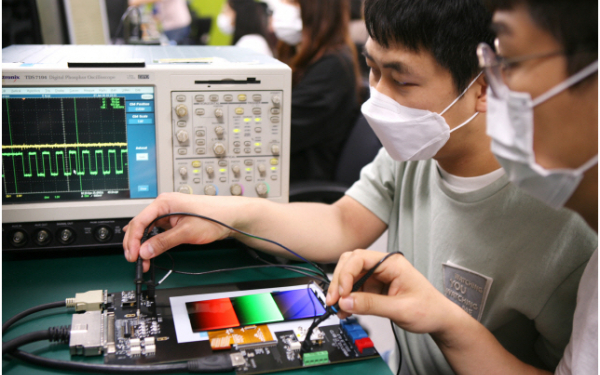Samsung is creating a new reduced OLED display for smartphones.

A new low-power OLED display for smartphones that reduces power consumption by up to 16 percent has been unveiled by Samsung Display Co.
The new OLED smartphone display was developed by Samsung Display, the world’s largest OLED manufacturer, after promoting a newly developed organic material whose luminous quality has improved significantly compared to the company’s previous OLED smartphone panels. For the first time, the new panel is being used in Samsung Electronics’ Galaxy S21 Ultra smartphones.
OLED displays do not need a separate light source, but instead generate their vivid colors by directly running an electric current through a patented collection of organic materials that are self-luminous.
This is why the efficiency of organic materials plays a crucial role in determining an OLED display’s performance including its color gamut, high luminance, high-dynamic range imaging (HDR), outdoor visibility and power consumption.
Jeeho Baek, Executive Vice President and Head of Samsung Display’s Mobile Display Distribution, Marketing & Product Planning Office, said, “The constant progression of display technologies has increased demand for lower power consumption to allow features such as larger displays, faster display driving, and higher resolution.
“Samsung Display directly engages with many of its customers to improve the performance of their newest products, building on our industry-leading expertise in material technology, which has been growing for a long time,” he added.
The new organic material from Samsung Display achieved its sharp increase in luminous efficiency by making electrons pass through the organic layers of the display faster and more easily. In other words, OLED panels can produce brighter light while consuming less power thanks to this method, which boosts the battery life for 5G smartphone users who spend more time watching video.
One of the most important components influencing the overall power consumption of a smartphone is the display panel. Therefore, as the power consumption of the monitor is decreased, this can have a huge effect on the time used by smartphones.
In the composition of more successful organic display materials, Samsung Display has channeled most of its technical capital into securing “super-gap” competitiveness. To that end, over the past decade, the organization has worked closely with a variety of global materials companies and has expanded its own talent pool in this field.
Globally, Samsung Display currently holds 5,000 patents covering the use of organic materials for displays. More than 370 patents relating to OLED organic materials have also been requested in each of the past three years.
Source: Japan Today


























